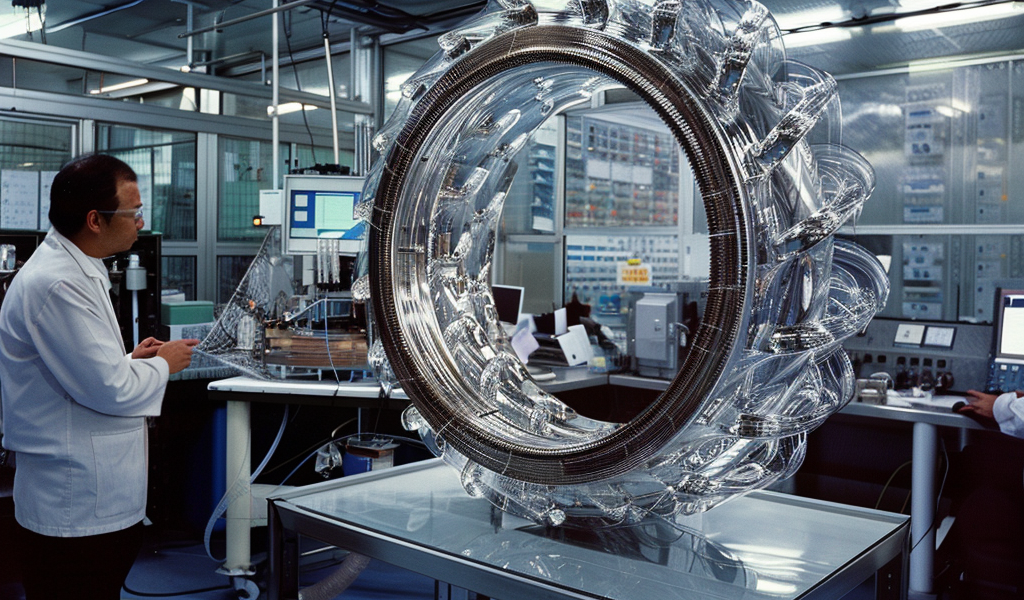In a groundbreaking achievement, Chinese scientists have successfully developed the world’s strongest resistive magnet, generating a steady magnetic field of 42.02 Tesla. This remarkable feat surpasses the strength of Earth’s magnetic field by an astonishing 800,000 times. The innovation was spearheaded by researchers at the High Magnetic Field Laboratory (CHMFL) of the Chinese Academy of Sciences, marking a significant milestone in the field of magnet research.
The resistive magnet, constructed from coiled metal wires, is a critical tool utilized in various magnet research facilities across the globe. This latest accomplishment follows the laboratory’s previous success in 2022, where they unveiled the world’s most powerful hybrid magnet, which reached a strength of 45.22 Tesla. The recent development is a testament to nearly four years of dedicated efforts by scientists and engineers, who meticulously refined the magnet’s structure and optimized its manufacturing processes.
This new magnet operates with a power supply of 32.3 megawatts, surpassing the previous record of 41.4 Tesla set by the US National High Magnetic Field Laboratory in 2017. The achievement not only highlights China’s advancements in magnet technology but also sets the stage for future innovations capable of sustaining even stronger magnetic fields.
According to Joachim Wosnitza, a physicist at the Dresden High Magnetic Field Laboratory in Germany, this record-breaking magnet opens up new avenues for research and exploration in physics. The ability to create reliable magnets capable of maintaining high magnetic fields can lead to the discovery of unexpected new physical phenomena.
High-field magnets are indispensable in the study of advanced materials, particularly superconductors, which are known for their ability to conduct electricity without generating waste heat at extremely low temperatures. The powerful magnetic fields produced by these magnets enable researchers to observe and manipulate states of matter, providing valuable insights into condensed-matter physics.
Alexander Eaton, a condensed-matter physicist at the University of Cambridge, emphasized the importance of high magnetic fields in experiments that require highly sensitive measurements. He noted that each additional Tesla significantly enhances measurement precision, allowing scientists to detect subtle phenomena that would otherwise go unnoticed.
Guangli Kuang, a specialist in high magnetic fields at the Steady High Magnetic Field Facility (SHMFF) of the Chinese Academy of Sciences, shared insights into the challenges faced during the development of the magnet. He highlighted the dedication and perseverance of the team, stating that reaching this new record was a complex and demanding process.
While resistive magnets are considered an older technology compared to other types of magnets, they possess unique advantages. They can maintain high magnetic fields for extended periods, making them particularly valuable in research settings where long-duration experiments are necessary. This capability allows scientists to conduct thorough investigations and gather comprehensive data over time.
As the scientific community continues to explore the potential of high magnetic fields, the implications of this new record are far-reaching. Researchers anticipate that the advancements in magnet technology will not only enhance our understanding of existing materials but also lead to the discovery of new materials with extraordinary properties.
The implications of this breakthrough extend beyond theoretical physics. The ability to generate and sustain such high magnetic fields could have practical applications in various industries, including medicine, energy, and materials science. For instance, advancements in magnet technology could contribute to the development of more efficient magnetic resonance imaging (MRI) systems, enhancing diagnostic capabilities in healthcare.
Furthermore, the exploration of superconductors in high magnetic fields could lead to innovations in energy transmission and storage, potentially revolutionizing how we harness and utilize electricity. As researchers delve deeper into the properties of materials under extreme magnetic conditions, the potential for groundbreaking discoveries remains vast.
In summary, the development of the world’s strongest resistive magnet by Chinese scientists marks a significant achievement in the field of magnet research. With its unprecedented strength and the potential for new discoveries, this innovation paves the way for future advancements in physics and materials science.





